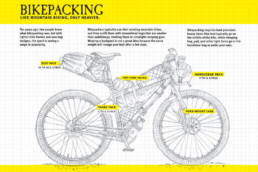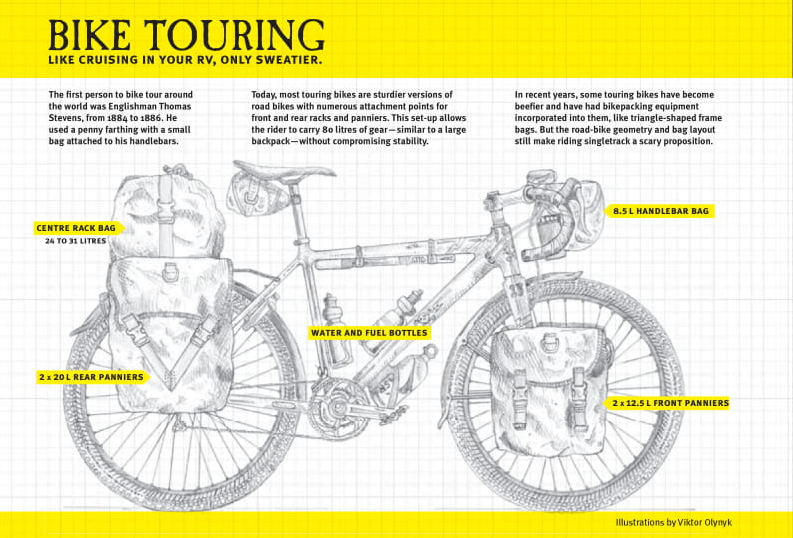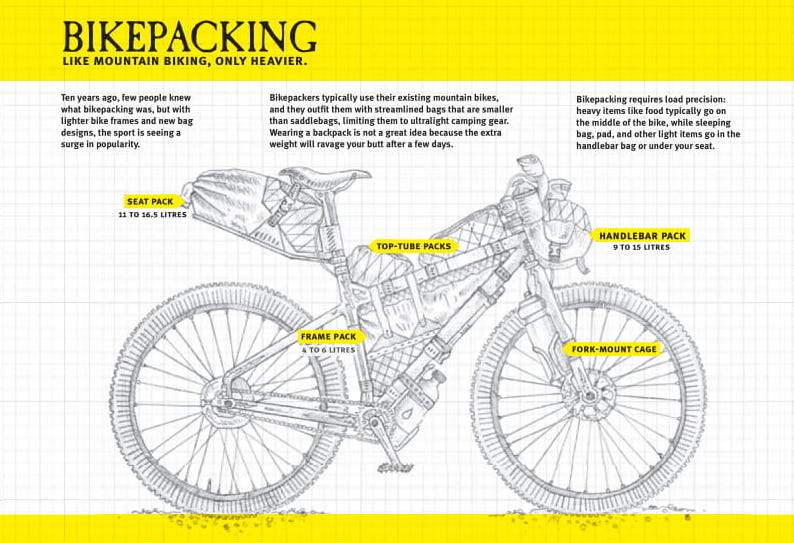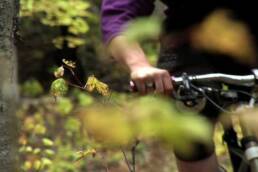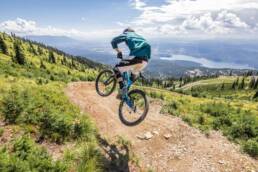In the recent issue of Kootenay Mountain Culture magazine we feature a story about writer Andrew Finley’s experience bikepacking the Purcell Range in British Columbia. Here are the differences between bikepacking and bike touring.
Bike Touring – Like cruising in your RV, only sweatier
• The first person to bike tour around the world was Englishman Thomas Stevens , from 1884 to 1886. He used a penny farthing with a small bag attached to his handlebars.
• Today, most touring bikes are sturdier versions of road bikes with numerous attachments points for front and rear racks and panniers. This set-up allows the rider to carry 80 litres of gear – similar to a large backpack – without compromising stability.
• In recent years, some touring bikes have become beefier and have had bikepacking equipment incorporated into them, like triangle-shaped frame bags. But the road-bike geometry and bag layout still make riding singletrack a scary proposition.
BikePacking – Like mountain biking, only heavier.
• Ten years ago, few people knew what bikepacking was, but with lighter bike frames and new bag designs, the sport is seeing a surge in popularity.
• Bikepackers typically use their existing mountain bikes, and they outfit them with streamlines bags that are smaller than saddlebags, limiting them to ultralight camping gear. Wearing a backpack is not a great idea because the extra weight will ravage your butt after a few days.
• Bikepacking requires load precision: heavy items like food typically go on the middle of the bike, while sleeping bag, pad, and other light items go in the handlebar bag or under your seat.
Related Stories
New Kootenay Bike Website
Ahhh, the wonders of Facebook. Check your news feed every once in a while and voila, one of your…
Goat Style Bike Jam Goes This Weekend
Based in sunny Creston, BC, the Kootenays very own slopestyle competition goes this weekend, attracting some of the…
Bellingham Bike Manufacturer, Kona, Launches New XC Video
House of the Big Wheel Part 2: Hei Hei and King Kahuna from Kona Bikes on Vimeo.
Creaking Tree String Quartet touring BC
Two time Juno nominees, The Creaking Tree String Quartet are coming to British Columbia to promote there fourth Album.…
Whitefish Bike Park To Open June 17
The mountain biking season begins Saturday, June 17 at the Whitefish Bike Park in Montana. Uploads will be available…
Rockstar Bike Rodeo Stunt Contest – Panorama, BC
Panorama Mountain Village and Rockstar Energy Drink are working together to bring one of the most inventive contests…


